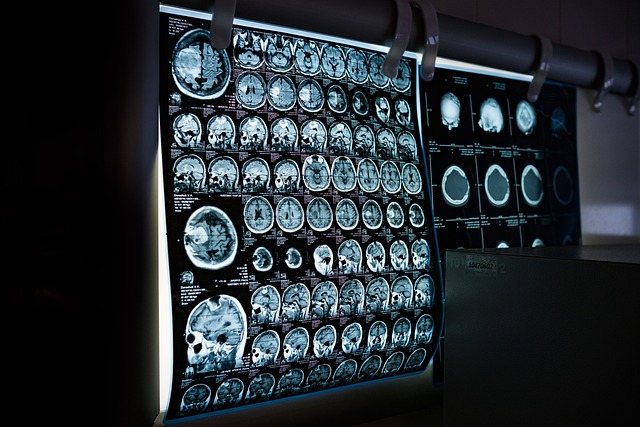Triple Negative Breast Cancer: Unique Aspects
Triple negative breast cancer represents approximately 10-15% of all breast cancer cases and stands apart from other breast cancer types due to its distinct biological characteristics. Unlike hormone receptor-positive or HER2-positive cancers, this subtype lacks estrogen receptors, progesterone receptors, and HER2 protein expression, making it particularly challenging to treat with conventional targeted therapies.

Triple negative breast cancer (TNBC) differs significantly from other breast cancer subtypes in its molecular profile, treatment response, and prognosis. Understanding these differences is crucial for patients and healthcare providers in developing effective treatment strategies.
Why Is Triple Negative Breast Cancer Different from Others?
The fundamental difference lies in the absence of three key receptors that are typically targeted in breast cancer treatment. While most breast cancers express estrogen receptors (ER), progesterone receptors (PR), or human epidermal growth factor receptor 2 (HER2), triple negative breast cancer lacks all three. This absence means that common hormonal therapies like tamoxifen or aromatase inhibitors, as well as HER2-targeted drugs like trastuzumab, are ineffective against TNBC.
Triple negative breast cancer also tends to be more aggressive, with faster growth rates and higher likelihood of early metastasis. It disproportionately affects younger women, particularly those under 40, and shows higher prevalence among women of African and Hispanic descent. The cancer cells in TNBC often have a higher grade, meaning they appear more abnormal under microscopic examination.
What Sets Triple Negative Breast Cancer Apart?
Several distinctive features set TNBC apart from other breast cancer types. The tumor’s molecular signature reveals different genetic mutations and pathways compared to hormone-positive cancers. BRCA1 mutations are found in approximately 15-20% of TNBC cases, creating a strong hereditary component that influences both treatment decisions and family counseling.
The pattern of recurrence also differs significantly. While hormone-positive breast cancers may recur years or even decades after initial treatment, TNBC recurrences typically occur within the first three to five years. However, if patients remain disease-free for five years, their long-term prognosis improves dramatically.
TNBC shows unique sensitivity to certain chemotherapy agents, particularly platinum-based drugs and DNA-damaging agents. This sensitivity stems from defects in DNA repair mechanisms, especially in tumors with BRCA mutations or similar genetic profiles.
How Does Triple Negative Breast Cancer Differ from Other Types?
Treatment approaches for TNBC rely heavily on chemotherapy, surgery, and radiation therapy, as targeted therapies available for other breast cancer types are not effective. Recent advances have introduced immunotherapy options, with drugs like pembrolizumab showing promise in certain TNBC patients, particularly those with high levels of PD-L1 expression.
The response to neoadjuvant chemotherapy (treatment given before surgery) differs markedly in TNBC. While these tumors may initially respond dramatically to chemotherapy, achieving complete pathological response rates of 30-40%, those that don’t respond completely have a higher risk of recurrence.
Prognostically, TNBC presents a paradox. Despite its aggressive nature and limited treatment options, patients who achieve complete response to treatment often have excellent long-term outcomes. The five-year survival rate for early-stage TNBC that responds well to treatment approaches that of other breast cancer subtypes.
| Treatment Approach | TNBC | Hormone-Positive BC | HER2-Positive BC |
|---|---|---|---|
| Hormonal Therapy | Not Effective | Primary Treatment | Adjunct Therapy |
| Targeted Therapy | Limited Options | Multiple Options | Highly Effective |
| Chemotherapy | Mainstay Treatment | Often Used | Combined Approach |
| Immunotherapy | Emerging Option | Under Investigation | Limited Use |
Research continues to identify new therapeutic targets for TNBC. Scientists are investigating PARP inhibitors for patients with BRCA mutations, antibody-drug conjugates, and novel immunotherapy combinations. Clinical trials are exploring personalized medicine approaches based on tumor genetics and immune system markers.
The heterogeneity within TNBC itself is becoming increasingly recognized. Researchers have identified several subtypes of triple negative breast cancer, each with distinct molecular characteristics and potential treatment vulnerabilities. This growing understanding may lead to more personalized treatment approaches in the future.
Patients diagnosed with triple negative breast cancer should work closely with oncology teams experienced in treating this subtype. The aggressive nature of TNBC often requires prompt treatment initiation and careful monitoring throughout the treatment process.
Understanding the unique aspects of triple negative breast cancer helps patients and families prepare for the treatment journey ahead. While TNBC presents significant challenges, ongoing research continues to improve outcomes and expand treatment options for this distinct breast cancer subtype.
This article is for informational purposes only and should not be considered medical advice. Please consult a qualified healthcare professional for personalized guidance and treatment.




